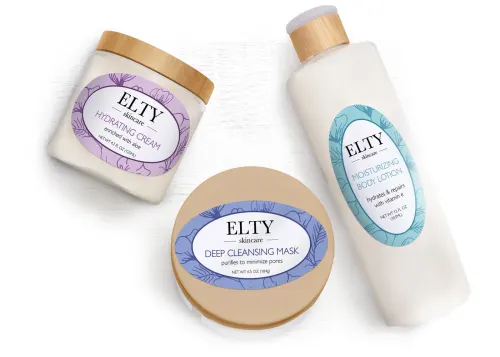In the ever-evolving landscape of skincare, the humble lotion stands as a beacon of everyday luxury and necessity. Understanding the intricate details on a lotion label is essential for making informed choices about what we apply to our skin. A lotion label is not just a list of ingredients; it is a symphony of emollient elucidation, a guide to the nourishing elements that promise to keep our skin soft, supple, and hydrated.
Deciphering the Components
Active Ingredients: The Powerhouses of Hydration
Active ingredients are the key players in any lotion formulation. These components are specifically chosen for their ability to provide significant benefits to the skin. Common active ingredients include:
- Hyaluronic Acid: Known for its exceptional hydrating properties, hyaluronic acid can hold up to 1,000 times its weight in water, making it a staple in many moisturizing products.
- Glycerin: A humectant that attracts moisture from the air into the skin, helping to keep it hydrated.
- Ceramides: Lipid molecules that help restore the skin barrier and retain moisture, essential for maintaining healthy skin.
Emollients: The Softeners of Skin
Emollients are the substances that soften and smooth the skin. They play a crucial role in lotions by filling in the gaps between skin cells, creating a smooth surface. Key emollients found in lotions include:
- Shea Butter: Rich in vitamins A and E, shea butter provides deep moisturizing benefits and helps to improve skin elasticity.
- Jojoba Oil: Mimics the skin’s natural oils, providing balanced moisture without clogging pores.
- Lanolin: An effective moisturizer that forms a barrier on the skin, preventing moisture loss.
Preservatives: Ensuring Safety and Longevity
To maintain the integrity and safety of lotions, preservatives are a necessary addition. They prevent the growth of bacteria and mold, ensuring that the product remains safe for use over time. Common preservatives include:
- Phenoxyethanol: A widely used preservative that is effective against a broad spectrum of microorganisms.
- Parabens: While controversial, parabens are still used in many formulations due to their effectiveness in preventing microbial growth.
- Ethylhexylglycerin: Often used in combination with other preservatives, it enhances their effectiveness while also acting as a skin-conditioning agent.
Reading Between the Lines: What Labels Don’t Tell You
While the ingredients list provides valuable information, there are other aspects of a lotion label that require careful consideration. These include:
Fragrance: Friend or Foe?
Fragrance in lotions can be a double-edged sword. While it adds a pleasant scent, it can also cause irritation, especially for sensitive skin. It’s important to:
- Look for Fragrance-Free Options: These are less likely to cause irritation and are better suited for sensitive skin.
- Check for Natural Fragrances: Essential oils can provide a natural scent without the harsh chemicals found in synthetic fragrances.
Hypoallergenic Claims
The term “hypoallergenic” suggests that a product is less likely to cause allergic reactions. However, this term is not strictly regulated, so it’s crucial to:
- Review the Ingredients List: Even hypoallergenic products can contain ingredients that may cause reactions in some individuals.
- Patch Test: Always perform a patch test before using a new product extensively, especially if you have sensitive skin.
Dermatologist-Tested
This claim indicates that a product has been reviewed by a dermatologist. However, it doesn’t necessarily guarantee safety for all skin types. Consider:
- Researching the Brand: Look into the brand’s reputation and read reviews from other users.
- Consulting with Your Dermatologist: If you have specific skin concerns, it’s always best to get a professional opinion.
The Importance of pH Balance
The pH level of a lotion is a critical factor in its effectiveness. The skin’s natural pH is slightly acidic, typically around 5.5. Using a lotion with a compatible pH can help maintain the skin’s natural barrier and prevent issues such as dryness and irritation. Look for:
- pH-Balanced Formulations: These are designed to match the skin’s natural pH, ensuring optimal performance.
- Avoiding Alkaline Products: High pH levels can disrupt the skin’s barrier, leading to increased sensitivity and dryness.
Sustainability and Ethical Considerations
In today’s conscious consumer market, sustainability and ethical practices are becoming increasingly important. When choosing a lotion, consider:
Cruelty-Free and Vegan Products
Many consumers are now looking for products that are cruelty-free and vegan. This means that:
- No Animal Testing: The product and its ingredients have not been tested on animals.
- No Animal-Derived Ingredients: Ingredients like beeswax or lanolin are avoided in favor of plant-based alternatives.
Eco-Friendly Packaging
Packaging is a significant part of a product’s environmental impact. Look for:
- Recyclable Materials: Packaging that can be recycled helps reduce waste.
- Minimal Packaging: Less packaging means less waste, benefiting the environment.
Conclusion: The Art of Selecting the Perfect Lotion
Navigating the world of skincare can be daunting, but custom lotion labels can empower you to make informed decisions. By paying close attention to active ingredients, emollients, preservatives, and other label claims, you can select products that meet your skin’s unique needs and align with your ethical values. Custom box designer help you to customize your lotion labels as per your desire requirements.


